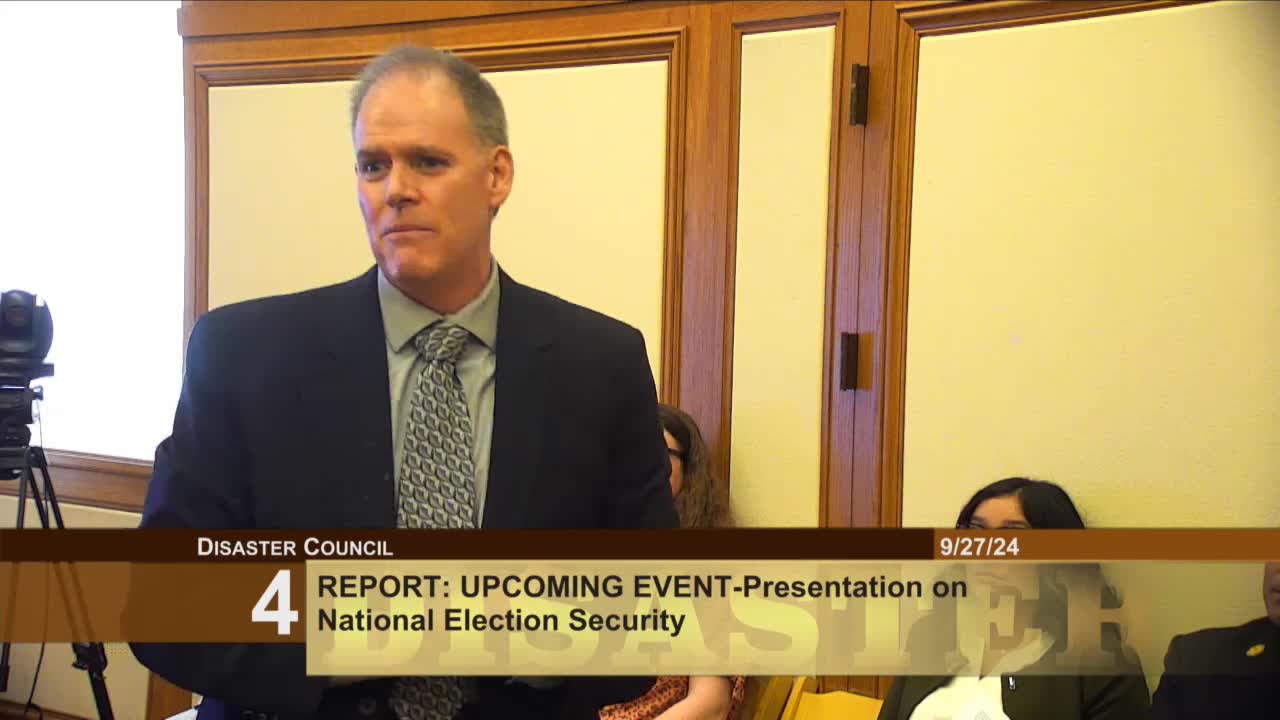Bay Area leaders address escalating cyber and physical threats at public safety summit
September 27, 2024 | San Francisco City, San Francisco County, California
This article was created by AI summarizing key points discussed. AI makes mistakes, so for full details and context, please refer to the video of the full meeting. Please report any errors so we can fix them. Report an error »

In a recent government meeting held in San Francisco, officials addressed the alarming rise in both cyber and physical threats facing the city and the nation. The atmosphere was charged as experts outlined the precarious balance between escalating dangers and dwindling resources, emphasizing the urgent need for enhanced security measures.
The discussion began with a stark warning about the increasing sophistication of cyber threats. Key foreign actors, notably Russia and China, are targeting local government systems, exploiting vulnerabilities to influence elections and incite unrest. The officials highlighted the importance of vigilance, noting that even a single individual influenced by extremist ideologies could lead to acts of violence. This reality underscores the necessity for community awareness and proactive reporting of suspicious behaviors.
To combat these threats, the city has implemented a network of threat liaison officers across various emergency services. These officers are trained to recognize indicators of both cyber and physical threats, facilitating a rapid response to potential dangers. The collaboration extends to social media companies, which have been enlisted to report concerning online activities directly to local authorities, enhancing the flow of critical information.
The meeting also touched on the pressing issue of domestic terrorism, with officials revealing a significant uptick in investigations following recent global events. The establishment of a joint terrorism task force aims to streamline communication and resource sharing among local law enforcement and federal agencies, ensuring a coordinated approach to threat management.
In addition to cyber and terrorism threats, the meeting addressed the escalating fentanyl crisis. Officials reported a staggering increase in drug seizures, with the amount of fentanyl confiscated rising from half a ton five years ago to an alarming 14 tons in recent years. The discussion highlighted the complex networks involved in drug trafficking, particularly the role of Honduran nationals in distributing narcotics across the country.
As the meeting concluded, officials called for community engagement and education to empower residents in recognizing and reporting threats. They emphasized that everyone has a role to play in safeguarding public safety, urging citizens to remain vigilant and informed.
The discussions at this meeting reflect a broader concern for the safety and security of San Francisco and its residents, as officials work tirelessly to adapt to an evolving landscape of threats. The call to action resonates with the community, reminding them that collective awareness and proactive measures are essential in navigating these challenging times.
The discussion began with a stark warning about the increasing sophistication of cyber threats. Key foreign actors, notably Russia and China, are targeting local government systems, exploiting vulnerabilities to influence elections and incite unrest. The officials highlighted the importance of vigilance, noting that even a single individual influenced by extremist ideologies could lead to acts of violence. This reality underscores the necessity for community awareness and proactive reporting of suspicious behaviors.
To combat these threats, the city has implemented a network of threat liaison officers across various emergency services. These officers are trained to recognize indicators of both cyber and physical threats, facilitating a rapid response to potential dangers. The collaboration extends to social media companies, which have been enlisted to report concerning online activities directly to local authorities, enhancing the flow of critical information.
The meeting also touched on the pressing issue of domestic terrorism, with officials revealing a significant uptick in investigations following recent global events. The establishment of a joint terrorism task force aims to streamline communication and resource sharing among local law enforcement and federal agencies, ensuring a coordinated approach to threat management.
In addition to cyber and terrorism threats, the meeting addressed the escalating fentanyl crisis. Officials reported a staggering increase in drug seizures, with the amount of fentanyl confiscated rising from half a ton five years ago to an alarming 14 tons in recent years. The discussion highlighted the complex networks involved in drug trafficking, particularly the role of Honduran nationals in distributing narcotics across the country.
As the meeting concluded, officials called for community engagement and education to empower residents in recognizing and reporting threats. They emphasized that everyone has a role to play in safeguarding public safety, urging citizens to remain vigilant and informed.
The discussions at this meeting reflect a broader concern for the safety and security of San Francisco and its residents, as officials work tirelessly to adapt to an evolving landscape of threats. The call to action resonates with the community, reminding them that collective awareness and proactive measures are essential in navigating these challenging times.
View full meeting
This article is based on a recent meeting—watch the full video and explore the complete transcript for deeper insights into the discussion.
View full meeting
